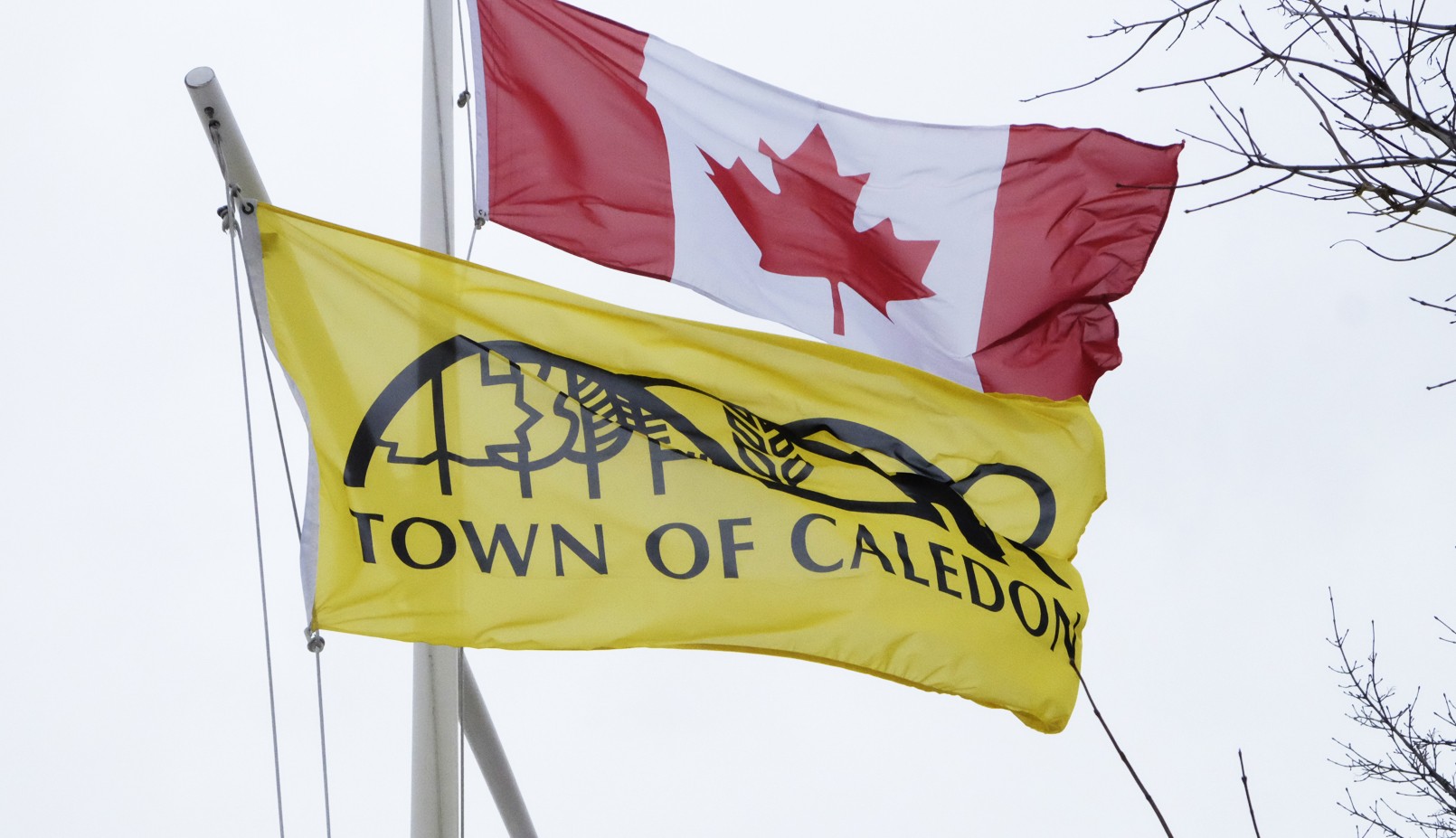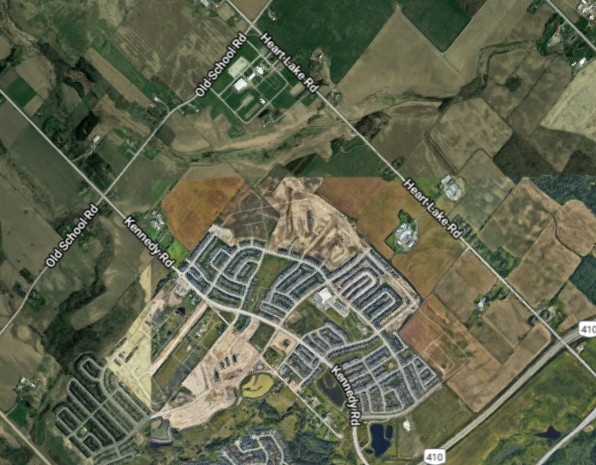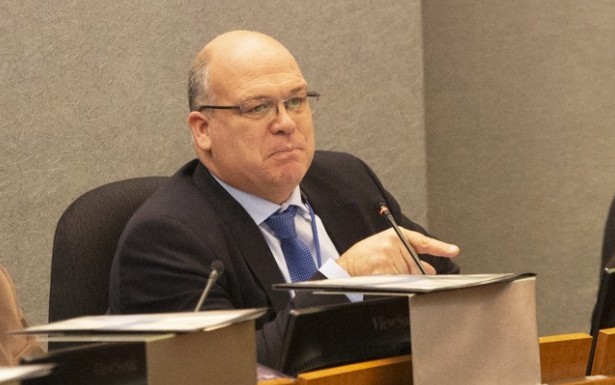
Angry Caledon councillors take drastic measures to wrestle planning control from Peel Region
Boxed in and frustrated Caledon councillors have voted to send a hail mary motion to the provincial government, to put major planning decisions in the hands of local council, instead of the Region of Peel.
On January 19, Caledon Ward 2 Councillor Johanna Downey tabled a motion asking Minister of Municipal Affairs and Housing Steve Clark to create a new sub-area chapter under the Places to Grow Act for Peel. The motion, and its supporters, suggests the move would allow Caledon more autonomy over broad planning decisions that are normally subject to regional approval.
Places to Grow is the legislation that sets out population density and other targets for Southern Ontario, to manage the ongoing influx of new residents who settle in Canada’s largest region every year.

With Peel's largest proportion of prime developable land, Caledon is attempting to gain control over its future growth, despite a history of poor planning decisions.
Since it took effect 15 years ago, Caledon has been criticized for failing to conduct its growth planning in a smart and sustainable way, instead choosing a haphazard approach to development, which regional councillors have fought against. The excessive costs of Caledon’s planning, which allows subdivisions to be built in the middle of nowhere, are largely borne by Mississauga and Brampton taxpayers.
Regional council and Caledon council have disagreed fiercely about how Peel’s largest geographical municipality, with a fraction of the population, should grow in the coming decades.
Council members from the two cities have accused Caledon of eschewing smart-growth principles under the provincial legislation in favour of policies driven by developers and other political interests.
Caledon Mayor Allan Thompson has been criticized for pushing planning decisions that will cost taxpayers excessive amounts because the lack of infrastructure around proposed developments means underground and other utilities, roads and services such as paramedics, policing and public health have to be spread out across far flung areas.

Caledon Mayor Allan Thompson
Thompson sold his own family land in the isolated southwest corner of Caledon to a developer for more than $9 million and has aggressively pushed approval for development in the area, despite little infrastructure and services to support it.
Instead, the Region of Peel and its council members have stripped Caledon of some local planning authority and have pushed for denser growth that is adjacent to existing development where infrastructure already exists and would therefore cost far less. This is generally how planning is done across the GTA.
During last week’s town council meeting, Downey said that “political decisions” were hampering Caledon’s planning. “I think we have seen inequity and, quite frankly, undue influence at the regional table when it comes to our planning matters,” she said, suggesting recent regional moves were blocking Caledon’s potential for smart growth.
In the past, the Town has been warned by its own planners, officials at the Region, provincial experts and appeals tribunals that it cannot keep planning for unsustainable sprawl that does not fit regional and provincial policy.
In 2015, Caledon members at the Region walked out of a council meeting when Mississauga and Brampton councillors first attempted to strip the smaller municipality of authority over its own planning, after many expressed concern it was not following the Province’s growth plan.
On another issue, equally incompatible with smart growth, most Caldeon council members including Thompson, support the Province’s plans to resurrect the GTA West Highway. The massive 400-series corridor was scrapped in 2018 by the Liberals, after an expert panel found it would do almost nothing to solve congestion and risked propagating further environmentally devastating sprawl. Advocates determined to save the Greenbelt, which the highway would encroach upon, are trying to force the Doug Ford PC government to drop its current plan to build the highway along a route it approved in the summer.
It’s another controversial planning issue most Caledon council members have taken a stand on, raising questions about their commitments to smart growth and environmentally sustainable development.
In July, frustrated after it lost another regional vote, Caledon was granted a Ministerial Zoning Order (MZO) by Clark to move forward with the ROPA34 development, for lands around Chinguacousy Road and Mayfield Road. The move circumvented the will of Peel Region in favour of Caledon, which once again pushed development that made little sense to Peel’s policy makers. Meanwhile, Mississauga and Brampton taxpayers will have to pay for the lion’s share of extra infrastructure costs.
Less than half-a-year later, Caledon again wrote to Clark. A vote that led to the Town losing two seats at the regional table, giving them to Brampton, caused consternation among local councillors who asked the Province to extend the review period for the Region’s decision to restructure council composition, which was constrained by the timing of the next provincial and municipal elections in 2022.
Brampton, with a population of 650,000, had argued it deserved more than seven seats and that Caledon, with about 90,000 residents, should not have five seats.
Clark responded and granted Caledon’s request to extend the time period to make the decision on regional council composition, but Peel councillors proceeded anyway prior to the new year and made the move to give Brampton nine seats at the Region, while Caledon will only have three.
The decision sparked anger among most Caledon members who characterized the move as a political ploy to strip the town of authority.
Last week, Caledon councillors again asked Minister Clark, who oversees 444 separate municipalities, to give them a hand.
The approved motion for a special planning designation was built on a precedent set in 2012, when the Province created a sub-area chapter in its planning legislation to deal with Simcoe County. A series of specific circumstances were set out to govern how Simcoe would grow and where new settlements would pop-up in an area dominated by relatively small towns..
At the time, the Simcoe move was met with opposition from environmentalists, who suggested it went against the principles of Ontario’s smart growth aspirations. Environmental Defence and Friends of the Greenbelt both suggested the plan would be problematic and lead to costly sprawl, including leapfrog development. They feared far-flung new settlements would create more car-dependent communities and the need for roads across sensitive land.
“In terms of conflicts with the Growth Plan, the Simcoe strategy essentially proposes the creation of employment areas along Highway 400 in locations that are not adjacent to existing communities,” Ray Tomalty (Ph.D.) and Bartek Komorowski (MUP) wrote in a 2011 paper published by Friends of the Greenbelt. “Creating employment areas away from residential uses and other services run counter to the Growth Plan’s emphasis on creating complete communities.”
Surrounded by agriculture, Caledon East could be deemed a leapfrog development.
In Caledon, the Town’s tri-nodal approach — planning growth in three separate areas of the huge municipality simultaneously — could be characterized in the same way.
Physically larger than Toronto, critics have pointed out that growth planning in Caledon set for the southwest corner, the east around Bolton and close to the middle, makes no sense. Disconnected infrastructure including utilities, municipal services and other needs have to be provided in each area, instead of building around one dense, urban centre, which would cost far less and would prevent long travel times even for the most basic tasks, such as shopping or visiting the doctor.
Caledon’s sprawling, disjointed approach, makes everything from transit planning to the construction of schools and healthcare a major headache. GO Transit services, for example, can’t be built in each of the three areas, but they could be expanded around Bolton, the only urban area in Caledon, and the place where planners have tried to direct future growth.
Instead, it means three geographically distant places all require significant investment to support new housing and employment.
Exactly what the Town actually wants from its most recent request is unclear. Supporters and critics of the motion agreed last Tuesday it was vague and that they didn’t want to copy the Simcoe sub-area chapter, just the process.
“The Simcoe-sub area chapter also does not provide lower-tier municipalities with explicit authority on growth management over the upper-tier municipalities,” a spokesperson for the Ministry of Municipal Affairs and Housing told The Pointer, making reference to the “unique circumstances” around the Simcoe sub-area. “Lower-tier municipalities are required to conform with the official plan of the upper-tier municipality.”
Caledon Ward 5 Councillor Annette Groves called the motion “premature” and described it as putting the “cart before the horse — again”. She pointed to the lack of financial studies done by staff and limited comparisons to the Simcoe situation.
Her Ward 1 colleague, Ian Sinclair, also raised key questions about the motion. In each instance, staff were only able to provide vague answers about the thrust of the move, not specifics.
“I don’t understand how this proposed maneuver under the Growth Plan is going to help us,” Sinclair said, pointing to the detail in the Simcoe plan and its unique collection of small municipalities. “The motion talks about the quality and control of local planning matters, but I don’t know what you mean by local planning matters. Does that mean community design? It seems to be silent on the big issue of servicing costs and major roads.”
Mississauga Mayor Bonnie Crombie expressed her disapproval of the motion in response to questions from The Pointer. “This is completely counter to the Regional Planning system outlined by the Province,” she said. “The motion also leaves critical questions unanswered, most notably whether Caledon would still expect the Region of Peel to pay for necessary infrastructure such as roads, water and wastewater treatment. I know my residents wouldn’t be happy having to help pay for Caledon’s infrastructure expenses without Mississauga elected officials having a say in how that community is planned and developed.”
Brampton Mayor Patrick Brown did not respond to a request for comment.
An archived portion of the Province’s website contains a series of frequently asked questions about the Simcoe sub-area amendment. It explains that the process toward creating a sub-area began in 2010 to provide “more specific direction for municipalities in Simcoe County and the cities of Barrie and Orillia, to implement the Growth Plan.”
A year later, in November 2011, the Provincial Development Facilitator, who mediates when complex local planning issues arise, provided advice on the sub-area, after 59 meetings with representatives of Simcoe’s 16 municipalities. The provincial spokesperson described the process as involving “extensive consultation” and added that “policies related to the Simcoe sub-area are intended to eventually transition sub-area municipalities towards applying the general A Place to Grow policies as they developed and strengthened their internal processes and capabilities.” The comments suggest a significantly different situation when comparing Simcoe and Peel.
Despite its frustrations, Caledon has benefitted from overrepresentation at the regional table for years. Even with its reduced seat number of councillors, Caledon remains overrepresented per capita in Peel Region. It also benefits from pooled regional tax dollars that contribute to roads, wastewater, drinking water, public health, paramedic services and other services.
When Mississauga tried to separate from the Region of Peel in 2019 it was Caledon and Brampton that opposed the move. “Quite frankly, this motion plays right into the hands of Mississauga,” Groves said Tuesday.
“I think we have to mount a very serious campaign against this,” Mississauga Ward 5 Councillor Carolyn Parrish told her city colleagues last week. She said Wards 3 and 4 Councillor Martin Medeiros, who is chair of Brampton's planning committee, was pushing the same rallying cry in Brampton.
“Is the Caledon motion a cry for help? More the dramatic continuation of a theme,” she told The Pointer. “They have been consistently building the case at Queen’s Park that they are being bullied by Mississauga, in particular, and Brampton as well. So this reinforces the damsel in distress theme.”
Parrish said she was disappointed to see the move come after attempts to increase Caledon’s voice during the Region’s official plan review. “My particular disappointment with Downey’s motion comes from the fact that, as Chair of Regional Planning, I have bent over backwards to ensure Caledon has equal representation on the newly formed Planning Committee,” she added.
With the motion passed by Caledon, the decision is now in the hands of Minister Clark. A Peel Region meeting Thursday will focus on the 2021 budget, meaning it is unclear if Parrish, Medeiros or any Caledon councillors will raise the issue.
“We might as well go on our own,” Groves added. “We might as well tell the Region, tell the Province, that we don’t want to be part of Peel Region anymore.”
Email: [email protected]
Twitter: @isaaccallan
Tel: 647 561-4879
COVID-19 is impacting all Canadians. At a time when vital public information is needed by everyone, The Pointer has taken down our paywall on all stories relating to the pandemic and those of public interest to ensure every resident of Brampton and Mississauga has access to the facts. For those who are able, we encourage you to consider a subscription. This will help us report on important public interest issues the community needs to know about now more than ever. You can register for a 30-day free trial HERE. Thereafter, The Pointer will charge $10 a month and you can cancel any time right on the website. Thank you.
Submit a correction about this story


